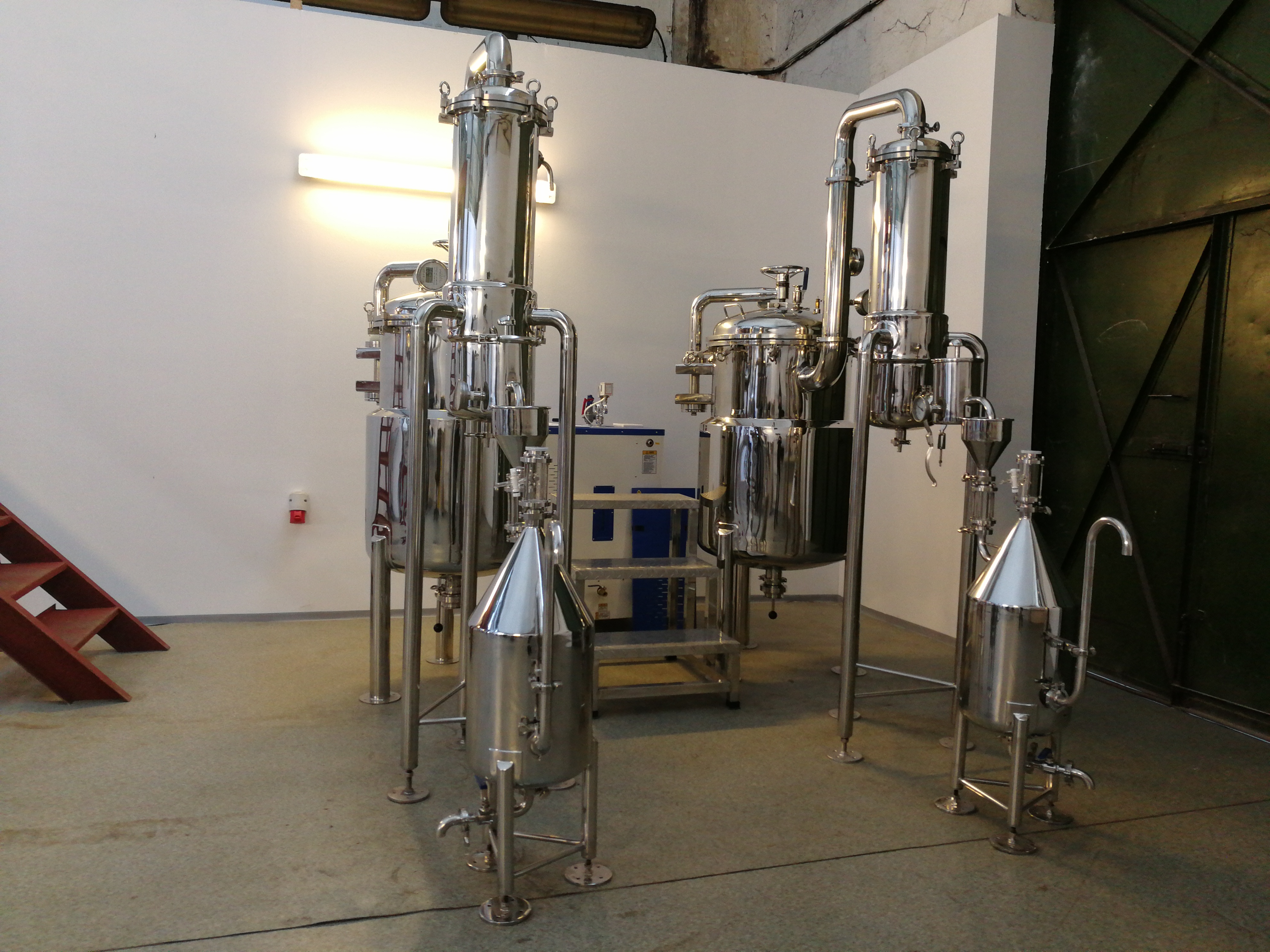What is distillation?
According to Wikipedia, “Distillation is the process of separating the components or substances from a liquid mixture by using selective boiling and condensation.” There are many different kinds of distillation – steam distillation is the process we use to extract the essential oil from lavender.
In simplest terms, the process of steam distillation for lavender involves heating the plant matter up to the boiling point, capturing the essential oil vapors as they rise, then cooling the vapors and allowing them to condense back into liquid so the essential oil can be collected. That’s it!


Basic Steps
The basic steps for steam distillation are:
- Place plant material in still
- Boil water under plant matter
- When steam rises through plant matter, collect the oil vapor and steam as they travel into condenser tube
- Cool/condense vapors in tube back into liquid
- Collect essential oil and water (now hydrosol) liquids from tube
What kind of still do you use?
We use a traditional 30 gallon copper still, built originally for whiskey distillation and modified slightly for our purposes. The image above is our much smaller, but still functional (and more photogenic), copper demonstration still.
So how does a lavender farmer distill the oil?
Step 1: Harvest!
The first step in distillation is to harvest the lavender when your yield per run is highest. Different lavender farmers have different methods, preferences, and ideas about when that is. Farmer Rick prefers to wait until the lavender is at the end of its life cycle, when the flowers have died and the buds are just beginning to drop from the plant. Unlike harvesting for bud (where we need long stems to hang dry the lavender), when harvesting for essential oil we try to cut as little stem as possible. While there are trace elements of oil in stems, it isn’t enough to justify the space the stems would take up in the still – we want as much bud stuffed in there as possible to get as much oil as we can out of the run.
Step 2: Pack Still
After harvest, we tightly pack the lavender in the still. The lavender is packed above a screen to keep the plant material from dropping down into the water (which will boil in the bottom of the still). We pack approximately 40-50lbs of lavender per run (or 10-30 plants, depending on the variety and age of the plant). When the pot is fully packed, we place the bonnet on top.
Step 3: Add & Heat Water
Next, we boil the water in the bottom of the still. Since the boiling point of lavender oil (204°F) is lower than water (212°F) then by the time the water boils, the lavender essential oils have already started to vaporize. As the steam and oil vapors rise from the still, the bonnet collects them and forces them into the condenser tube.
Step 4: Condensation
The next step is to cool the condenser tube, so the steam and oil vapors inside it condense back into liquid. Because the condenser tube is angled down (away from the still), gravity causes the newly condensed liquids to run down the tube and out, where they are collected together in a graduated cylinder. Because oil and water don’t mix, the lavender essential oil floats on top, making it easy to collect. We monitor the temperature throughout this process, with the goal of keeping the temperature of the condensed liquids consistent.
Sidenote: Hydrosol
At this point, the “water” has now been converted to “hydrosol” – a mixture of water (hydro) and soluble material (sol). Lavender Hydrosol has many uses, including as a natural house cleaner. While it is considered a byproduct of the steam distillation process, because of its popularity, most lavender farmers (including us) save and sell the hydrosol. Lavender Hydrosol is 100% natural and contains only water and soluble lavender. It has a distinct “green” fragrance that is pleasant but uniquely different than lavender essential oil.
Step 5: Essential Oil
The lavender essential oil is now floating on top of the hydrosol in the graduated cylinder. To collect it, we simply pour it off! As it gets to the bottom of the layer, we use a pipette to gather the very last of the oil from the surface of the hydrosol to avoid pouring any hydrosol in with the oil.
